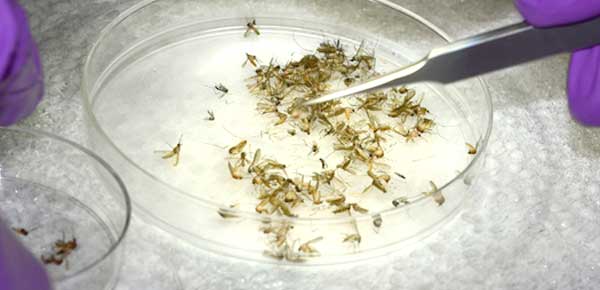Conference Presentation: A Systems Biology Approach to Viral Research (West Nile Virus Case Study)
QIAGEN scientists, Jean-Noel Billaud, Ph.D. and Stuart Tugendreich, Ph.D., recently completed a demonstration project on how Biomedical Genomics Workbench and Ingenuity Pathway Analysis (IPA) can be used together to create a systems biology approach to exploring host response in West Nile Virus infection. Their findings were presented by Dr. Billaud at the 2015 Molecular Med Tri-Con meeting during the Genome and Transcriptome Analysis track. West Nile Virus is a neurotropic virus that is transmitted via mosquito bite. Infection is a worldwide health issue and the most common cause of epidemic viral encephalitis in North America. Despite the potentially devastating health impacts of infection, its viral pathogenesis is still incompletely understood and there are no approved therapies for use in humans. Utilizing RNA-Seq data generated by researchers at Yale University,[1] Billaud and Tugendreich evaluated gene pathways and cellular response to explore the difference in immune response between susceptible and resistant individuals. One of the exciting hypotheses they generated was around the role that the CLEC7A gene plays in the progression of life-threatening encephalitis. This gene has been described as a host susceptibility factor required by West Nile Virus, but there are still questions about its larger role. Using the Molecule Activity Predictor (MAP) tool within IPA, for example, they were able to interrogate sub-networks and canonical pathways associated with CLEC7A and generate scenarios by selecting a molecule of interest, indicating up or down regulation, and simulating directional consequences of downstream molecules and the inferred activity upstream in the network or pathway. “One of the things we were able to demonstrate was that if you can inhibit CLEC7A you could potentially reduce the risk of West Nile Virus-associated encephalitis. There is much more testing and validation that has to be done, but it’s the kind of finding that would be compelling enough to warrant further investigation of this gene as a therapeutic target,” said Tugendreich. Watch a recording from recent webinar for more information on this study: IPA Webinar West Nile Virus – Leveraging IPA and RNA-seq Data For Infectious Disease Research.

Understanding West Nile Virus Infection: The QIAGEN Bioinformatics Solution – Biomedical Genomics Workbench + Ingenuity Pathway Analysis (IPA)
[1] Qian F, et al. Identification of Genes Critical for Resistance to Infection by West Nile Virus Using RNA-Seq Analysis. Viruses. 2013 Jul; 5(7): 1664–1681. Published online 2013 Jul 8. doi: 10.3390/v5071664. Accessed at: http://www.mdpi.com/1999-4915/5/7/1664.

